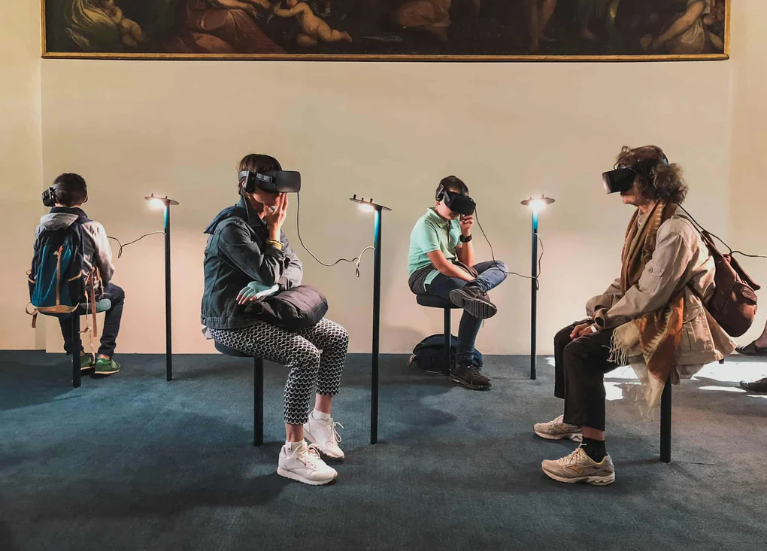Beyond the Obituary: The Technology and Future of Interactive Funeral Notices

For centuries, funeral notices were printed on paper and passed from hand to hand. They were simple announcements — a time, a date, a name. But as our lives move increasingly online, so too does the way we share, remember, and honour those we’ve lost.
Interactive funeral notices represent the next step in that evolution. They go beyond the traditional obituary, blending technology and storytelling to create spaces where memories can live on and grow. These new forms of remembrance aren’t just about information — they’re about connection.
In a world where family and friends are often separated by geography, interactive funeral notices allow people to gather in one digital place. They bridge physical distance, offering comfort through shared stories, photos, and tributes.
From Printed Words to Living Tributes
The move towards digital memorialisation began quietly — first through online obituaries hosted by newspapers, then through dedicated memorial websites. Social media soon followed, becoming informal spaces of remembrance where friends could post messages or share memories.
Now, the idea has matured. Funeral notices are no longer static; they’re dynamic, multimedia experiences that evolve over time. Families can upload video messages, curate galleries of photographs, and invite others to contribute their own memories.
The concept of an “interactive funeral notice” brings permanence to these experiences. Unlike social posts that disappear down timelines, these digital memorials are carefully designed to last, serving as living archives of a person’s life and impact.
See also: How Technology Is Revolutionizing the Fitness Industry
What Makes a Funeral Notice Interactive?
An interactive funeral notice combines traditional memorial information — name, service details, tributes — with digital features that allow visitors to engage. It can include:
- Photo and video galleries to show a person’s life beyond words.
- Interactive guestbooks where visitors can leave condolences, stories, or messages.
- Live-streaming options so distant family and friends can attend virtually.
- Memory timelines showing key life events.
- Links to charities or causes for donations in the person’s name.
These features transform remembrance from a single moment into an ongoing experience. Visitors don’t just read — they participate.
The Technology Driving the Transformation
QR Codes on Headstones
A growing number of memorial sites now feature discreet QR codes etched onto headstones. Scanning them with a smartphone leads to an online page — often the person’s interactive funeral notice — where visitors can view photos, read tributes, or learn more about their life.
This simple use of technology creates a seamless bridge between physical and digital remembrance. It brings stories to life right where memory feels most tangible — at the graveside.
Augmented and Virtual Reality Memorials
Some innovators are going further, experimenting with augmented and virtual reality (AR and VR) to create immersive remembrance spaces. With AR, a visitor could point a phone at a headstone to see a video montage or hear a loved one’s voice. With VR, entire memorial gardens can exist digitally, allowing people to “walk” through shared spaces and experience memories in three dimensions.
These technologies may still be emerging, but they signal a clear direction: remembrance that engages the senses and emotions in ways never before possible.
The Role of the Internet of Things (IoT)
As smart devices become part of everyday life, they’re also finding a place in how we remember. IoT technology allows connected memorials — digital plaques or devices that link to personalised content. Imagine touching a plaque and hearing a favourite song, or receiving reminders on meaningful anniversaries.
In essence, the IoT is making memorials more responsive — turning memory into an interactive experience that continues to evolve.
Personalisation and Storytelling in the Digital Age
Every life has its own rhythm, its own story to tell. Interactive funeral notices allow families to shape that story in a way that feels personal and lasting.
Traditional obituaries often focus on facts — dates, roles, family members. But digital memorials invite emotion, creativity, and collaboration. A video of a wedding dance, a recording of a laugh, a photo of a handwritten note — these details transform remembrance into storytelling.
For families, this level of personalisation can be deeply comforting. It gives them control over how their loved one is remembered and allows others to contribute their memories too. In many cases, this collective storytelling becomes an act of healing.
A Tool for Connection and Inclusion
In the past, geography could make mourning a lonely experience. Relatives abroad or friends unable to travel often missed funerals entirely. Interactive funeral notices change that.
By hosting tributes and live-streamed services online, they make remembrance accessible to everyone, no matter where they are. People can join from different time zones, leave messages in their own languages, and share cultural expressions of grief.
For communities, this inclusivity can strengthen bonds. It ensures that remembrance is not confined to a single day or place but becomes something shared and ongoing.
Ethical and Emotional Considerations
While the idea of interactive remembrance is inspiring, it also raises important questions.
Privacy and data ownership are key concerns. Families need to know who controls the digital memorial, how long it will stay online, and what happens to the content in the future. Some services now use blockchain technology to guarantee authenticity and prevent tampering, offering peace of mind that memories will remain intact.
There’s also an emotional balance to strike. Technology should enhance remembrance, not overwhelm it. A memorial filled with features is only meaningful if it still feels sincere. The goal should always be to preserve dignity and respect, even as we embrace innovation.
The Role of Funeral Directors and Service Providers
For funeral directors and memorial providers, interactive funeral notices present both an opportunity and a responsibility.
Offering digital remembrance options can differentiate their service, giving families more choice in how they commemorate their loved ones. Some providers now include interactive notices as standard — combining physical services with dedicated online memorial pages.
However, success depends on thoughtful implementation. The technology must be simple, accessible, and emotionally sensitive. Training staff to guide families through these options can make a significant difference in the experience.
In the longer term, we may see partnerships between funeral providers and tech developers to create integrated platforms — linking service details, memorial media, and virtual attendance in one secure place.
Looking to the Future: How Technology Will Continue to Shape Remembrance
As technology advances, so will the ways we celebrate and preserve memory. Some potential directions include:
- AI-generated memorials: Tools that help write tributes or compile life stories using photos, videos, and recorded memories.
- Voice-preservation technology: AI that captures and recreates a loved one’s voice for future generations.
- Holographic remembrance: 3D projections allowing families to interact with digital likenesses during memorial services.
- Smart home integration: Reminders or audio tributes connected to home devices on birthdays or anniversaries.
Each innovation reflects a deeper truth: remembrance is evolving from something static into something participatory. Memory is no longer bound to paper or stone; it’s becoming part of a living network of stories, emotions, and technology.
Balancing Innovation with Humanity
Amid all this technological progress, one thing remains constant — remembrance is about people, not platforms. The aim of interactive funeral notices is not to replace tradition, but to enrich it.
Technology offers tools, but it’s empathy that gives them meaning. A QR code on a headstone is just a link until it’s filled with stories and love. A virtual reality memorial is only powerful when it captures something truly human.
As we explore these innovations, sensitivity must guide every decision. Families need reassurance that their memories will be handled with care, and that technology serves their needs — not the other way around.
Why Interactive Funeral Notices Matter
At its heart, the value of interactive funeral notices lies in continuity. They ensure that the stories of those we’ve lost remain accessible — not just to the current generation, but to future ones.
Children and grandchildren can one day read tributes, watch videos, and understand who their ancestors were through a personal lens. That kind of digital heritage extends the meaning of remembrance far beyond the immediate moment of loss.
Interactive funeral notices create a sense of permanence in an impermanent world. They remind us that while life changes form, memory continues to connect us.
The Future of Remembering is Now A New Trend
The shift from printed obituaries to interactive funeral notices marks more than a technological change — it represents a cultural one. We are reimagining how to honour life in a connected world.
Through QR codes, virtual reality, and digital storytelling, technology is giving remembrance new layers of meaning. Yet at the core of every innovation is the same desire that has always guided us: to remember, to celebrate, and to share love across time.
Interactive funeral notices are not the end of tradition. They’re its evolution — a way to carry stories forward, ensuring that memories stay alive in both heart and history.





